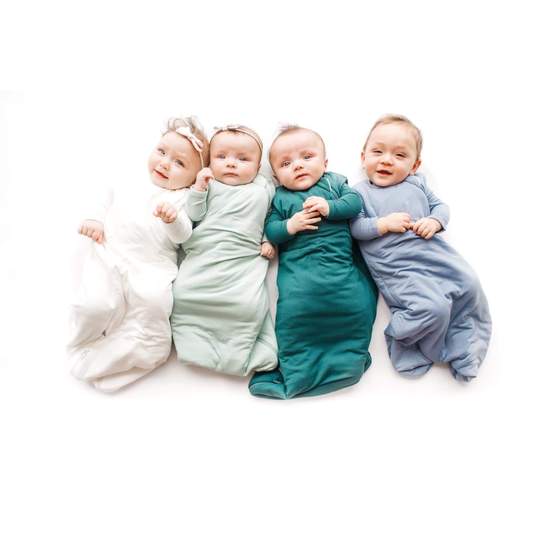When it comes to your little one, you only want the very best. And what is better than a world-famous diaper brand? But is Pampers a safe option for your baby’s care needs?
Here is a short answer.
Pampers is quite safe to use on your baby. It does away with several nasty chemicals that are harmful. It is also one of the most absorbent, soft, and comfortable diaper brands. It is fairly affordable too. There are chemicals in Pampers. But these are non-toxic.
They may have mild effects in rare cases. But on the whole, they don’t have any major adverse health impact. Pampers is moving towards a more environmentally-conscious manufacturing process.
This article will show you exactly what goes into the making of Pamper diapers. It will also explain all the benefits and drawbacks of this brand. If you want the cleanest choices, you may opt for other 100% organic brands that are chemical-free.
But for standard diapers, Pampers is a good brand.
Table of Contents
What are Pampers diapers made of?
Every Pampers diaper has a few layers. The composition of each layer across varieties is described below.
- Core
This is the innermost layer
- Fluff pulp
This is the pulp of either softwood or hardwood. It is eco-friendly and ethically sourced.
- Absorbers
The core also has a Super Absorbent Polymer (SAP) hydrogel. This is a synthetic water soaker. It retains up to 300 times its weight. This keeps wetness at bay.
- Top-sheet
This is the interior lining of the diaper, which the skin is exposed to. Both the fiber components are non-woven. This quality provides a gentle cover so it doesn’t chafe.
Polypropylene
This fabric seals in the water. It is also very light so it doesn’t weigh the baby down when it’s active.
Polyester
This fabric keeps the skin dry. It is a very airy and soft material that won’t aggravate the skin.
Plant-based fibers
In some varieties, polyethylene is substituted with plant-derived fibers. These could be hemp, bamboo, or cotton blends.
Lotion
The top sheet has a thin layer of lotion. It contains petrolatum (Vaseline jelly), stearyl alcohol, and aloe vera. It is a moisturizing balm that keeps the area hygienic. It prevents rashes and germ accumulation.
- Soft Outer Cover
This is a film between the diaper and external fabric like clothes or bedding. It is made of the same material as the top sheet. In some cases, other materials are added.
- Polyester blend
This textile combines polyester plastic with natural materials like cotton and linen.
- Premium Cotton
High-quality cotton adds a downy, fluffy feel.
- Seams and Joints
These binds and secure the diapers. These are water-lock adhesives made of cellulose-based wood pulp. The bonding agents do not use any toxic solvents like ethanol.
- Back-sheet
This is the outermost layer. It sports some inked doodles on the outside. But this part of the diaper doesn’t have direct contact with the skin. The ink used is tested by Pampers. They claim it is safe and non-sensitizing for infants.
These dyes are commonly used across food, toys, and clothing. Pampers doesn’t use dispersed dyes that are insoluble. Disperse dyes can cause contact allergies.
- Fasteners and Leg Cuffs
These elastic parts allow the diaper to stretch. This keeps the baby snug and secure. It can be made of plastic foam, spandex, or synthetic rubber elastic.
- Wetness Indicator
This is a piece of pH paper attached to the diaper. It changes color when urine touches it. So you can change diapers proactively before it gets too messy.
What chemicals are in Pampers diapers?
There are a few chemicals in Pampers diapers. Pampers avoids many noxious chemicals like parabens, heavy metals, natural rubber, and phenols. Parabens are added as preservatives. They are anti-microbial, to prolong shelf—life.
Lead and mercury are not used in Pampers. But there could be other heavy metals in the dyes. These may be cadmium, chromium, and arsenic amongst others. Pampers does not clarify whether there are other heavy metals in the pigments.
Heavy metals can be toxic for babies and retard their development. The dyes used by Pampers may be benign since disperse dyes are not used. But inks may still leak and bother the skin.
Pampers uses a super absorbent polymer (SAP) gel in the core. This gel may cause throat and lung irritation if inhaled. But there is no conclusive evidence for this.
The other chemicals and additives are detailed in the sections below.
ALSO READ: Are Huggies diapers toxic?
Do Pampers diapers contain latex?
No, Pampers does not contain latex. Latex is a liquid form of rubber sap. Pampers only uses synthetic rubber. It does not use natural rubber or any rubber derivatives. Latex may be natural, but it is still an allergen. Fragile baby skin reacts quicker to the proteins in the latex.
Both synthetic and natural latex can trigger hypersensitivity. Your baby may also have a latex allergy. If you have no choice, try using organic latex. At least it is unprocessed and untreated. So it doesn’t have harmful chemicals like formaldehyde.
Organic latex also contours well to the baby’s body. It also has antimicrobial properties that keep away bed bugs and mold. This improves the quality of sleep.
Do Pampers diapers have fragrance?
Yes, some varieties of Pampers do have added fragrances. Small amounts are dabbed onto the absorbent core. The Pampers Baby Dry, Premium Care, and Pants contain light scents. Pampers claims to have tested these scents to ensure they are safe and non-sensitizing.
But fragrances contain hundreds of hidden chemicals. The U.S. Food and Drug Administration (FDA) does not require a listing of these ingredients in this sector. There is only partial disclosure. Some additives in the scents could be unsafe and aggravate tender areas.
Why do Pampers smell like chemicals?
Maybe because they do contain chemicals! Disposable diapers like Pampers smell like chemicals right after they are opened. This is because of the plastics and phthalates. Fragrances are added to cover the smell of urine and poop.
The scents combined with plastic can smell like a hospital. Plus if your baby urinates, the ammonia in the urine reacts with the chemicals in the gel core. This also has a very pungent stench. This reaction may also cause chemical burns or rashes.
Do Pampers diapers have baby powder in them? Why do they smell like baby powder?
No, Pampers does not contain baby powder or talc. If babies inhale powder dust it could cause breathing difficulty. It can block the nose and lungs, causing chest pain. Talc absorbs moisture and prevents wet rash.
But it is unnecessary and possibly counterproductive. It may cause dermatitis or inflammation. The American Pediatric Association (APA) suggests avoiding baby powder.
The Pampers’ baby powder fragrance comes from a smidgeon of scent added between the core and top-sheet. It is a gentle fragrance similar to talc. Not all Pampers diapers are scented. You can choose unscented varieties like Pure Protection.
Do Pampers diapers have chlorine?
No, Pampers diapers do not contain chlorine. They are elemental-chlorine-free (ECF). This means chlorine gas is not used in manufacturing. Instead, chlorine dioxide is used. This gives off fewer dioxins. Fortunately, Pampers is dioxin-free too.
Totally-chlorine-free (TCF) diapers don’t use any chemicals with chlorine derivatives. This makes them the safest. Pampers is not totally free of chlorine derivatives. But since there are no dioxins in the final product, it is as safe as TCF diapers.
Chlorine is used as a bleaching agent to make diapers white. It also sanitizes the wood pulp in the core. But it can cause respiratory diseases. In extreme cases, constant exposure to dioxins may cause cancer.
Do Pampers diapers contain phthalates?
Yes, Pampers does contain phthalates. Phthalates are used in diapers because they are cheap to produce. The U.S. FDA doesn’t regulate their use in this industry. So unless a brand is labeled phthalate-free, we can assume it is being used.
Pampers does not have a phthalate-free stamp. They are vital plasticizers that make the diapers stretchy yet sturdy. Pampers does not include phthalates in their list of avoided ingredients either. Phthalates are most harmful when ingested.
But even small amounts in diapers may cause asthma or slow growth.
Are Pampers diapers safe for the environment? Are they biodegradable?
Not particularly. Pampers’ parent company Proctor and Gamble is launching more eco-friendly products. Pampers has also introduced a hybrid diaper – the Pampers Pure Disposable. This diaper combines reusable cloth and a disposable insert.
The disposable materials are reduced by approximately 30% compared to normal diapers. The rest of the diaper ranges are not biodegradable. They have a terrible impact on the environment. They pile up in massive quantities in landfills.
Petroleum-based components also contaminate water and endanger aquatic life.
Pampers does use plant-based materials. But this is only a part of the whole. The diapers still have plastic. Plastic polymers are not biodegradable or recycled. So even Pampers Pure is only partially biodegradable.
The 15% cotton covering may break down over time. But the rest of the diaper will remain intact in the ground for a very long time.
Can you flush Pampers wipes?
No, they are not meant to be flushed. Pampers Wipes are made of 97-99% water. But they still contain polypropylene, plastic, and other oily ingredients. The wipes may be soft and cloth-like. But they can’t be used as toilet paper.
The wipes will clog the plumbing. They build up over time. Fibers and polymers take time to disintegrate. This can block your septic tank. This is true even for diapers labeled septic-safe or flushable. Pampers is neither. So clearly they aren’t supposed to be disposed of in a toilet.
Can we use Pampers diapers for newborns?
Yes, Pampers does have diapers specifically for newborns. Pampers Swaddlers are for newborns whose birth weight is less than 10 pounds. If your baby is premature, no need to worry. Pampers also offers Preemie diapers. These cater to babies who are smaller than 6 pounds at birth.
They also have diaper pants for overnight use. Make sure you change your baby every 2-3 hours, except when sleeping. Else, fungus and bacteria will breed in the dampness. This can cause boils and skin redness.
Are Pampers diapers hypoallergenic?
Most varieties are. For example, Pampers Premium, Pure and Swaddler ranges are 100% hypoallergenic. All the Pampers wipes are hypoallergenic too. But the Baby Dry diapers and pants are not.
Hypoallergenic diapers are formulated to minimize or prevent allergic reactions. Hypoallergenic diapers don’t use latex, parabens, tributyltin (TBT), fragrances, or lotions. The Pampers Dry range isn’t hypoallergenic because it uses scents and lotions.
There are no uniform standards imposed on diaper brands to label potentially allergenic chemicals. You will have to set your own benchmark and decide if Pampers is safe enough.
Do Pampers diapers cause rash?
No, Pampers itself rarely causes rashes. They are mostly hypoallergenic. The lotion in the core has Vaseline which soothes the baby’s bottom. It forms a barrier for the skin. This repels moisture and bacteria. In rare cases, your baby may have a bad reaction to the light fragrances used.
Most rashes are caused by poor hygiene practices. You must air-dry your baby’s bottom for a few minutes after each change. Pampers reduces wet rash because it is super absorbent. Don’t use baby powder. It can make the redness worse.
If the symptoms don’t go away on their own, consult a doctor. It could be an infection or a prickly-heat breakout.
Do Pampers diapers cause cancer?
No, Pampers is unlikely to cause cancer. Some ingredients like petrolatum and possible VOCs may raise an alarm. VOCs are Volatile Organic Compounds like benzene, ethylene glycol, and formaldehyde amongst others.
Some studies indicate the possibility of cancer due to trace amounts of polycyclic aromatic hydrocarbons (PAHs). These occasionally contaminate Vaseline jelly during manufacturing. But other studies could not conclusively prove that genital skin absorbs these compounds.
Whether or not these negligible quantities are really carcinogenic remains disputed. But the chances of Pampers causing cancer is low since it does not have compounds like dioxins or organotin. But the industry is self-regulated. So we can’t be 100% sure of the safety of undisclosed ingredients.
Now that the Pampers particulars have been decoded, it’s up to you to choose what’s best for your tiny tot. Happy parenting!
References:
- https://www.pampers.com/en-us/diapers-wipes?filter=diapers
- https://www.verywellfamily.com/best-diaper-brands-5425579
- Does Glossier Skincare Have Fragrance? - October 21, 2022
- Is Aveeno Color-Safe? - October 20, 2022
- Is Acure Color-Safe? - October 20, 2022



